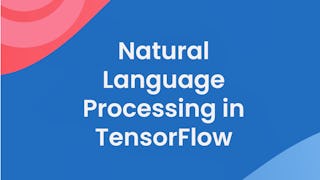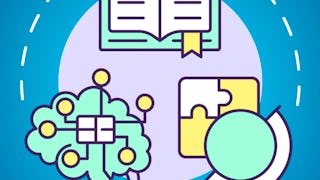Updated in May 2025.
This course now features Coursera Coach! A smarter way to learn with interactive, real-time conversations that help you test your knowledge, challenge assumptions, and deepen your understanding as you progress through the course. In this course, you will learn how to apply deep learning models to Natural Language Processing (NLP) tasks using Python. By the end of the course, you will be able to understand and implement cutting-edge deep learning models, including Feedforward Neural Networks, Convolutional Neural Networks, and Recurrent Neural Networks, tailored for NLP applications. You will also get hands-on experience with text classification, embeddings, and advanced models such as CBOW, GRU, and LSTM in TensorFlow. The course begins by providing a strong foundation, where you will understand the basic concepts of neural networks and their role in NLP. You will then move on to implement text classification using TensorFlow, exploring both the mathematical foundations of neurons and the practical implementation aspects. As the course progresses, you will dive deeper into more advanced models such as convolutional and recurrent neural networks. You will explore the theoretical background and code implementations for each of these models, ensuring that you gain both knowledge and practical skills. The second half of the course focuses on advanced topics like embeddings, CBOW, and recurrent neural networks (RNNs). You will explore how RNNs are used for sequential data processing, implementing tasks such as Named Entity Recognition (NER) and Parts-of-Speech (POS) tagging. Additionally, you'll tackle practical exercises that challenge you to apply your knowledge of convolutional and recurrent neural networks to real-world NLP tasks, further enhancing your skill set. This course is designed for individuals looking to deepen their understanding of NLP using deep learning models. It is suitable for anyone interested in the intersection of Python programming, deep learning, and natural language processing. While a basic understanding of Python is recommended, no prior experience in deep learning is required. The course will progress at a steady pace, offering both theoretical insights and hands-on coding practice.

















